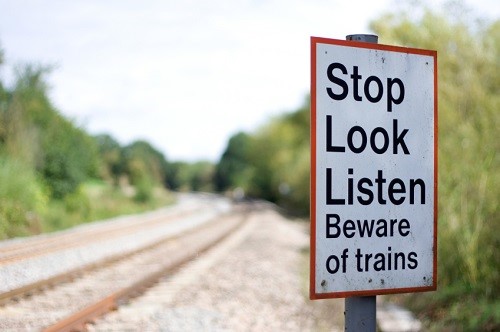When you walk in the room, who shows up for Read more →
Energy for Active Listening
Posted Wednesday, May 21, 2014
Leaders who listen well are more effective, more persuasive and more engaging than leaders who don’t listen. Carol Wilson¹ lays out five levels of listening:
1. Interrupting
2. Sharing
3. Advising
4. Attentive Listening
5. Active Listening
We have thought about Levels 1-4 in previous posts.
- You’re not listening if you’re interrupting, sharing or advising (Levels 1, 2 or 3).
- Attentive listening (Level 4) can be effective, especially in the midst of change.
Today, let’s complete the set by looking at active listening (Level 5) in more detail.
5. Active Listening
“I had the worst meeting with my boss today.”
“What happened?”
“She tore apart my financial report. I was embarrassed in front of everyone.”
“That must have been difficult.”
“You don’t know the half of it.”
“Has this happened before?”
. . .
“Why do you think she reacts that way?”
. . .
“Have you thought about what you can do?”
Active listening takes your leadership to the next level. Like attentive listening, you are focused on the other person and what they say. But you are adding more breadth and depth to the conversation. I define active listening as “the art of listening with intensity to truly hear what the other person says, knows and feels.”
The conversation about the meeting disaster gets to the heart of the issue. The other person’s feelings are validated with the reflective statement “That must have been difficult.” Causality is explored with the “Why?” question. And the other person’s problem solving is activated by asking “What can you do?”
Just the Facts?
Both attentive listening and active listening are powerful and effective tools for a leader. Both focus on the other person and help them make sense of their situation.
So what’s the difference? For me, attentive listening focuses primarily on the facts of the situation. An attentive listener asks “Who? What? Where? When?” Active listening goes beyond the facts to get to reactions and feelings. Active listening consciously explores causal factors and engages the problem solving capabilities of the other person. An active listener asks “Why? How? What’s next?”
Attentive listening focuses on the words of the other person. The active listener goes beyond just the words to notice tone, facial expression and body language. Carol Wilson describes active listening as “listening behind the words and between the words; listening to the silences; using your intuition; promoting the coachee to explore; facilitating the coachee’s self learning and awareness; making suggestions.”
If attentive listening can help shrink a performance valley, active listening is even better. When you actively listen, you have a greater opportunity to address feelings, explore causes and get the other person to solve their own problems. Then, you maximize their sense-making in the midst of change and help them get back to peak performance sooner.
Managing Your Energy
Active listening is powerful and effective. That power comes from your intensity and focus. But expending that level of power can drain your battery.
Bottom line: Active listening is hard. In a classroom exercise, I ask my students to actively listen for seven minutes. Maybe one student in thirty can actively listen for seven minutes.
Don’t be discouraged if you have trouble staying in active listening mode. Like most leadership skills, you can improve your capacity for active listening with practice. If you’re new to active listening, start small. Try this mini-experiment:
- Find someone who needs to talk. Then listen as intensely as possible for ten minutes. Notice how much time you spend in interrupting, sharing, advising, attentive listening and active listening.
- Repeat with another 10 minute listening session. Try to increase your time in active listening. It’s ok to dip into attentive listening, but minimize your interrupting, sharing and advising. Again, notice how much time you spend in each listening level.
- Keep looking for listening opportunities, gradually increasing your proportion of active listening. Then, plan to listen for 15 minutes.
With enough practice, you can achieve 50-70% active listening for an hour.
If you’re already competent at active listening, I encourage you to listen more and better. Increase your active listening capacity like a miler training for a marathon. My mini-experiment in active listening has been going for years. After every coaching session, I still do a self-evaluation of my listening. I am getting better, but I still have a way to go.
Novice or expert, practice will build your listening capacity. And, if you listen carefully, you may notice a few performance valleys shrinking.
______________________
¹Carol Wilson, “Tools of the Trade” Training Journal, July, 2010, pp. 65-66.


